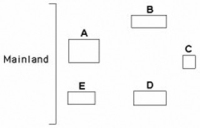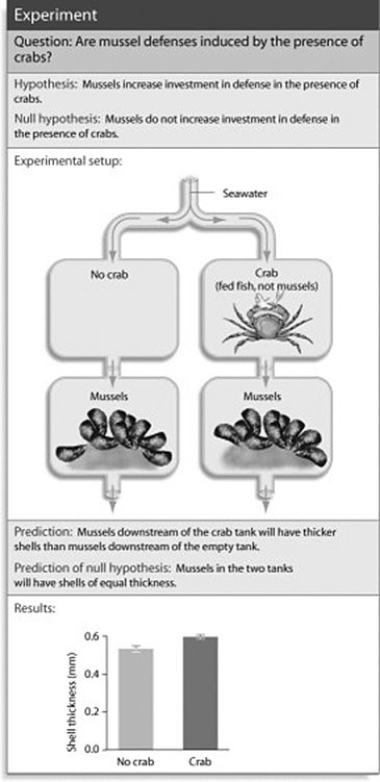A) limitation of plant biomass by rainfall amount
B) influence of temperature on competition among plants
C) influence of soil nutrients on the abundance of grasses versus wildflowers
D) effect of grazing intensity by bison on plant species diversity
Correct Answer

verified
Correct Answer
verified
Multiple Choice
One plausible hypothesis to explain why species richness is higher in tropical than in temperate regions is that ________.
A) tropical communities are younger
B) tropical regions generally have more available water and higher levels of solar radiation
C) higher temperatures cause more rapid speciation
D) tropical regions have very high rates of immigration and very low rates of extinction
Correct Answer

verified
Correct Answer
verified
Multiple Choice
In terms of community ecology, why are pathogens often more virulent now than in the past?
A) More new pathogens have recently evolved.
B) Host organisms have become more susceptible because of weakened immune systems.
C) Human activities are transporting pathogens into new habitats (or communities) at an unprecedented rate.
D) Medicines for treating pathogenic disease are in short supply.
Correct Answer

verified
Correct Answer
verified
Multiple Choice
Which of the following measurements would be most helpful in understanding the structure of an ecological community? I.determining how many species are present overall II.determining which particular species are present III.determining the kinds of interactions that occur among individuals of the same species IV.determining the abundance of resources available for one species
A) only I and II
B) only II and IV
C) only I, II, and III
D) I, II, III, and IV
Correct Answer

verified
Correct Answer
verified
Multiple Choice
According to the nonequilibrium model of community diversity, ________.
A) community structure remains stable in the absence of interspecific competition
B) communities are assemblages of closely linked species that are permanently changed by disturbance
C) interspecific interactions induce changes in community composition over time
D) communities are constantly changing after being influenced by disturbances
Correct Answer

verified
Correct Answer
verified
Multiple Choice
Which of the following statements is a likely explanation for why invasive species take over communities into which they have been introduced?
A) Invasive species are less efficient than native species in competing for the limited resources of the environment.
B) Invasive species are not held in check by the predators and agents of disease that have always been in place for native species.
C) Invasive species have a higher reproductive potential than native species.
D) Invasive species come from geographically isolated regions, so when they are introduced to regions where there is more competition, they thrive.
Correct Answer

verified
Correct Answer
verified
Multiple Choice
Red-cheeked salamanders are partially protected from predators because of cardiac glycosides they produce from glands on their back. When ingested, cardiac glycosides disrupt normal heart rhythms. A different salamander species, the imitator salamander, also has red cheek patches, but does not produce cardiac glycosides. It does gain protection from predators that have learned to avoid red-cheeked salamanders. How does this relationship affect the population dynamics of both species?
A) Both species are negatively affected.
B) Both species are positively affected.
C) The red-cheeked salamander is positively affected; the imitator is negatively affected.
D) The red-cheeked salamander is not affected; the imitator is positively affected.
Correct Answer

verified
Correct Answer
verified
Multiple Choice
Use the following diagram of five islands formed at around the same time near a particular mainland, as well as MacArthur and Wilson's island equilibrium model principles to answer the question.
 Which region would likely have the greatest species diversity?
Which region would likely have the greatest species diversity?
A) island A
B) island C
C) island D
D) the mainland
Correct Answer

verified
Correct Answer
verified
Multiple Choice
There are more species in tropical areas than in places more distant from the equator. This is probably a result of ________.
A) fewer predators and parasites
B) more dispersed annual solar radiation compared to the poles
C) more frequent ecological disturbances over a longer time span
D) a longer time frame without disturbances for evolution and speciation
Correct Answer

verified
Correct Answer
verified
Multiple Choice
The most plausible hypothesis to explain why species richness is higher in tropical than in temperate regions is that
A) tropical communities are younger.
B) tropical regions generally have more available water and higher levels of solar radiation.
C) higher temperatures cause more rapid speciation.
D) diversity increases as evapotranspiration decreases.
Correct Answer

verified
B
Correct Answer
verified
Multiple Choice
In some circumstances, grasses that initially lose tissues from being consumed by animals such as elk or cattle regrow more than they would have otherwise, and benefit from the moderate levels of grazing. Which of the following terms would best describe such a plant-herbivore interaction?
A) mutualism
B) commensalism
C) parasitism
D) predation
Correct Answer

verified
A
Correct Answer
verified
Multiple Choice
Which of the following could qualify as a top-down control on a grassland community?
A) limitation of plant biomass by rainfall amount
B) influence of temperature on competition among plants
C) influence of soil nutrients on the abundance of grasses versus wildflowers
D) effect of grazing intensity by bison on plant species diversity
Correct Answer

verified
Correct Answer
verified
Multiple Choice
Which of the following is an example of aposematic coloration?
A) a non-poisonous snake mimics the color of a poisonous one
B) the brightly colored patterns of monarch butterfly caterpillars
C) green color of a plant
D) a katydid whose wings look like a dead leaf
Correct Answer

verified
Correct Answer
verified
Multiple Choice
Character displacement differs from resource partitioning because character displacement ________.
A) is a fundamental difference in feeding behaviors of individuals
B) is directly linked to the evolution of genotypes that have allowed alternate resource use
C) is a difference in the niche within a habitat that is preferred to be used by a species
D) is not the result of competition
Correct Answer

verified
Correct Answer
verified
Multiple Choice
The oak tree fungal pathogen, Phytophthora ramorum, has migrated 800 kilometers in 15 years. West Nile virus spread from New York State to 46 other states in 5 years. The difference in the rate of spread is probably related to ________.
A) the lethality of each pathogen
B) the mobility of their hosts
C) the fact that viruses are very small
D) innate resistance
Correct Answer

verified
Correct Answer
verified
Multiple Choice
Which of the following best describes the consequences of white-band disease in Caribbean coral reefs?
A) Staghorn coral is decimated by the pathogen, and Elkhorn coral takes its place.
B) Key habitat for lobsters, snappers, and other reef fishes improves.
C) Algal species take the place of the dead coral, and the fish community is dominated by herbivores.
D) Algal species take over and the overall reef diversity increases due to increases in primary productivity.
Correct Answer

verified
Correct Answer
verified
Multiple Choice
Which of the following is a correct statement about MacArthur and Wilson's island equilibrium model?
A) As the number of species on an island increases, the emigration rate decreases.
B) Competitive exclusion is less likely on an island that has large numbers of species.
C) Small islands receive few new immigrant species.
D) Islands closer to the mainland have higher extinction rates.
Correct Answer

verified
Correct Answer
verified
Multiple Choice
Use the figure to answer the following question.
 What conclusion can you draw from the figure?
What conclusion can you draw from the figure?
A) Without direct contact, mussels can sense the presence of crabs.
B) Mussels can sense the presence of crabs only visually.
C) Mussels are increasing their shell thickness in response to water current.
D) Crabs hunt for mussels by focusing on the chemicals they emit into the water.
Correct Answer

verified
A
Correct Answer
verified
Multiple Choice
Elephants are not the most abundant species in African grasslands, yet they influence community structure. The grasslands contain scattered woody plants, but they are kept in check by the uprooting activities of the elephants. Take away the elephants, and the grasslands are converted to forests or to shrublands. The newly growing forests support fewer species than the previous grasslands. Which of the following statements describes why elephants are the keystone species in this scenario?
A) Elephants exhibit a disproportionate influence on the structure of the community relative to their abundance.
B) Grazing animals depend upon the elephants to convert forests to grassland.
C) Elephants are the biggest herbivore in this community.
D) Elephants help other populations survive by keeping out many of the large African predators.
Correct Answer

verified
Correct Answer
verified
Multiple Choice
Dwarf mistletoes are flowering plants that grow on certain forest trees. They obtain nutrients and water from the vascular tissues of the trees. The trees derive no known benefits from the dwarf mistletoes, nor are they negatively affected by this interaction. Which of the following best describes the interactions between dwarf mistletoes and trees?
A) mutualism
B) commensalism
C) competition
D) facilitation
Correct Answer

verified
Correct Answer
verified
Showing 1 - 20 of 71
Related Exams